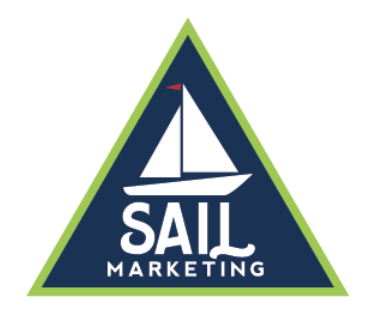|
Preserving Our Community: Local Nonprofits Making a Difference
At Sail Marketing LLC, we are passionate about supporting organizations that make a positive impact on our environment. Today, we're excited to spotlight several outstanding local nonprofits dedicated to preserving our natural habitats and educating our community on the importance of conservation. Tampa Bay Watch Tampa Bay Watch is committed to the restoration and protection of the Tampa Bay estuary. Through hands-on projects like oyster reef restoration and coastal cleanups, they work tirelessly to maintain the health of our marine ecosystems. Their efforts ensure a thriving environment for wildlife and a sustainable future for our community. Learn more about Tampa Bay Watch's initiatives and how you can get involved at www.tampabaywatch.org. Keep Pinellas Beautiful Keep Pinellas Beautiful focuses on litter prevention, waste reduction, and beautification projects in Pinellas County. By engaging volunteers and promoting environmental stewardship, they enhance the beauty and cleanliness of our neighborhoods. Their work inspires us all to take pride in our surroundings and protect our natural resources. Discover ways to support Keep Pinellas Beautiful's mission at www.kpbcares.org. Seaside Seabird Sanctuary The Seaside Seabird Sanctuary is dedicated to rescuing, rehabilitating, and releasing injured seabirds back into the wild. They also play a crucial role in educating the public about the impact of trash and debris on marine wildlife. By raising awareness about the dangers of pollution, the Seabird Sanctuary empowers individuals to make environmentally conscious choices. Explore how you can contribute to the Seaside Seabird Sanctuary's important work by visiting seasideseabirdsanctuary.org. At Sail Marketing LLC, we are inspired by the dedication of these nonprofits and encourage everyone to support their efforts. Together, we can protect our planet and create a better world for all living beings.
0 Comments
It's been a transformative year for Facebook and Instagram.
In February, Apple's new policy shook things up by introducing an additional 30% charge on boosted posts for mobile users. So, if you're boosting a post from your iPhone, that $10 boost now costs $13—$10 goes to Meta, and $3 to Apple. This surcharge doesn't improve your reach or results; it's simply an extra fee imposed by Apple. If we've had conversations in recent years, you know I always advise against boosting posts. When we get an awesome CPM on targeted paid ads vs. a hasty boost, it's a huge difference in ROI. Let's face it—organic reach has been declining steadily since 2016. Today, only about 4.2% of your Instagram followers and 1.98% of your Facebook followers will see your organic posts. It's disheartening to put effort into a post and see minimal engagement. Boosting seems like a quick fix to get more eyes on your products or services. But here's the catch: boosted posts are costly and lack targeting precision. They reach a broad audience on the platform, not necessarily your potential customers. What's the alternative? Facebook ads are not only more cost-effective but can be optimized to reach the right audience—people likely to buy from you. I recently compared the costs. Boosted posts for local businesses in Pinellas County tend to be significantly more expensive—four times more—than ad campaigns created through Ads Manager. The key to successful advertising now is to strategize with multiple campaigns and craft compelling messages to drive your ideal customers to your physical location. I urge you to ditch boosted posts and start running targeted ad campaigns for your local business today. Meta Business & ads manager is not something a lot of business owners know how to use to maximize a budget, and to reach a target audience with compelling messaging. Call or email us to schedule a FREE 30 minute consultation to see if we can help you navigate the marketing landscape and thrive in 2024. In the dynamic world of marketing, one of the greatest challenges for small businesses is tracking tangible and measurable results. It's not enough to simply launch campaigns and hope for the best – understanding the impact of marketing efforts is essential for growth and sustainability. Fortunately, there are various methods, from the straightforward to the sophisticated, that small businesses can employ to effectively track their marketing performance. 1. Ask Your Customers: Sometimes, the simplest approach yields valuable insights. Train your staff to ask customers how they heard about your business. Whether it's through word-of-mouth, social media, online search, or other channels, this direct feedback can provide valuable information about which marketing efforts are resonating with your audience. 2. Utilize UTM Parameters: For online marketing efforts, using UTM (Urchin Tracking Module) parameters in your URLs can help track the effectiveness of different campaigns. By adding specific tags to your URLs, you can identify which links are driving traffic to your website and monitor the performance of your various marketing channels in Google Analytics or other analytics platforms. 3. Set Up Conversion Tracking: Whether it's tracking online purchases, form submissions, or other desired actions on your website, setting up conversion tracking allows you to measure the effectiveness of your digital marketing campaigns. Platforms like Google Ads and Facebook Business Manager offer conversion tracking capabilities that enable you to attribute conversions to specific ads or campaigns. 4. Implement Call Tracking: For businesses that rely on phone calls for customer inquiries or sales, call tracking software can be invaluable. By assigning unique phone numbers to different marketing campaigns or channels, you can track which campaigns are driving phone calls and gain insights into caller demographics, call duration, and conversion rates. 5. Explore Geofencing Campaigns: Geofencing technology allows businesses to target potential customers based on their physical location. By setting up virtual boundaries around specific geographic areas, such as your business location or a competitor's storefront, you can deliver targeted ads to users within those boundaries. Track metrics such as ad impressions, clicks, and store visits to measure the impact of your geofencing campaigns. 6. Monitor Social Media Metrics: Most social media platforms offer built-in analytics tools that provide valuable insights into the performance of your organic and paid content. Track metrics such as reach, engagement, click-through rates, and conversions to assess the effectiveness of your social media marketing efforts. 7. Utilize Customer Relationship Management (CRM) Software: CRM software allows businesses to track interactions with customers and prospects, including email opens, website visits, and purchases. By integrating your CRM system with your marketing platforms, you can gain a holistic view of the customer journey and measure the ROI of your marketing campaigns. 8. Conduct A/B Testing: Experimentation is key to optimizing marketing performance. Conduct A/B tests on elements such as ad copy, imagery, call-to-action buttons, and landing pages to determine which variations resonate best with your audience and drive the highest conversions. 9. Track Offline Marketing Efforts: Don't overlook the importance of tracking offline marketing efforts, such as print ads, direct mail campaigns, and event sponsorships. Use unique promo codes, QR codes, or custom landing pages to track responses and measure the ROI of your offline marketing initiatives. 10. Regularly Analyze and Adjust: Effective marketing measurement requires ongoing analysis and adjustment. Regularly review your performance metrics, identify trends and patterns, and use these insights to refine your marketing strategies and allocate resources more effectively. In conclusion, tracking tangible and measurable results from marketing is essential for small businesses looking to maximize their marketing ROI and drive sustainable growth. By leveraging a combination of simple tracking methods, sophisticated digital tools, and strategic analysis, businesses can gain valuable insights into the effectiveness of their marketing efforts and make informed decisions to optimize their marketing strategies. Creating a robust content strategy for social media requires a deep understanding of your target audience, industry trends, and what resonates with your followers. Here are some key elements to consider and potential sources of data and research to support your strategy for your business:
1.Know Your Audience: Understand who your target demographic is, including their age, gender, location, interests, and purchasing behavior. This information will help tailor your content to better meet their needs and preferences. - Utilize social media analytics tools like Facebook Insights, Instagram Insights, or Twitter Analytics to gather data on your followers' demographics, engagement metrics, and content preferences. - Conduct surveys or interviews with your existing customers to gather insights into their shopping habits, preferences, and what type of content they find most engaging. 2. Industry Trends: Stay informed about current trends in your industry to ensure your content remains relevant and appealing to your audience. - Follow industry publications and websites to stay updated on the latest trends, consumer behavior, and market insights. - Monitor popular fashion influencers and bloggers on social media platforms like Instagram and TikTok to identify emerging trends and styles that resonate with your target audience. 3. Visual Content: Visual content will be key to showcasing your products and attracting potential customers. - Invest in high-quality photography and videography to create visually appealing content that highlights your products in an engaging and aesthetically pleasing way. - Experiment with different types of visual content, such as product photos, behind-the-scenes footage, customer testimonials, and user-generated content, to keep your feed diverse and engaging. 4. User-generated Content (UGC): Encourage your customers to share their experiences and photos of your products on social media. - Create branded hashtags and encourage customers to use them when posting about their purchases or shopping experiences. - Repost and share user-generated content on your own social media channels to showcase your products in real-life settings and build trust with your audience. 5. Engagement and Community Building: Foster a sense of community and engagement with your audience by encouraging conversation and interaction on your social media channels. - Respond promptly to comments, messages, and inquiries from your followers to show that you value their feedback and engagement. - Host interactive campaigns, contests, or giveaways to incentivize engagement and encourage user participation. By leveraging data and research to inform your content strategy, you can create compelling and relevant social media content that resonates with your audience, drives engagement, and ultimately drives sales/revenue for your business. Sail Marketing LLC. offers monthly consultation options up to full service marketing agency options. Let us know how we can help you thrive by emailing Sarah at [email protected]. |
AuthorPresident and CEO of Sail Marketing LLC., Sarah Laracuente loves to share helpful tips on our blog. Archives
April 2024
Categories |




 RSS Feed
RSS Feed
